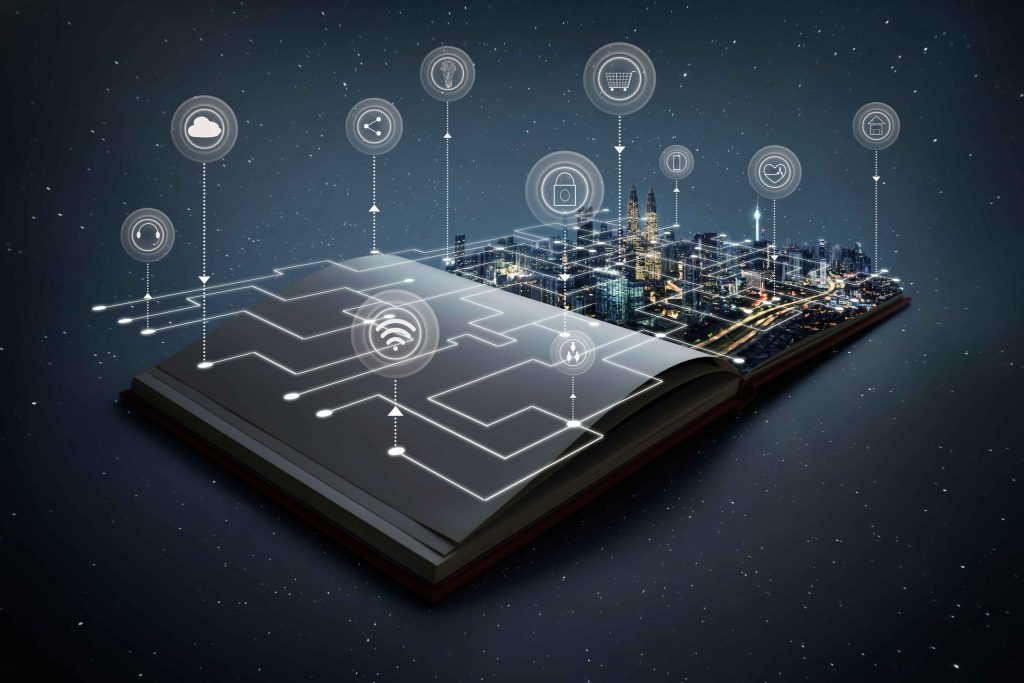Posted by Keyss
Digital Twins as a Service (DTaaS): The Next Wave in Industrial IoT
Introduction: The New Era of Connected Intelligence
Industrial IoT (IIoT) has come a long way from simple connected sensors. What began as machine monitoring has evolved into intelligent, data-driven ecosystems that optimize every aspect of operations — from production to maintenance to sustainability.
At the center of this transformation lies a powerful concept: Digital Twins.
And now, as cloud computing, AI, and IoT mature together, we’re seeing a new model emerge — Digital Twins as a Service (DTaaS) — a scalable, on-demand way to create, deploy, and manage digital twins without massive upfront investment.
What Is a Digital Twin?
A Digital Twin is a virtual replica of a physical asset, system, or process. It continuously receives data from sensors, IoT devices, and systems in real time — allowing engineers, operators, and AI algorithms to simulate performance, predict failures, and optimize efficiency.
For example:
A digital twin of a wind turbine can monitor vibration, temperature, and airflow data to predict bearing failures.
A twin of a manufacturing plant can simulate throughput, power consumption, and supply chain variables to improve output.
Digital twins are not just 3D visualizations — they are living, learning data models that evolve as their real-world counterparts change.
Introducing Digital Twins as a Service (DTaaS)
Digital Twins as a Service (DTaaS) extends the concept of digital twins into the cloud-native, subscription-based era.
Instead of developing and maintaining complex twin infrastructure in-house, organizations can now subscribe to digital twin capabilities delivered through cloud and edge platforms — much like Software as a Service (SaaS).
In simple terms:
DTaaS = Digital Twins + Cloud Infrastructure + Managed AI + Edge Connectivity
The goal? To make real-time operational intelligence accessible to every manufacturer, logistics provider, or energy company — without deep technical expertise or expensive infrastructure.
Key Components of DTaaS
Cloud Infrastructure
DTaaS platforms (like AWS IoT TwinMaker, Azure Digital Twins, and Siemens Xcelerator) provide cloud environments where twins are hosted, updated, and analyzed.
Scalable storage and computing power handle massive sensor datasets and simulation workloads.
Edge Computing
Edge devices process data locally to reduce latency.
This enables real-time decision-making — essential for manufacturing lines, energy grids, or autonomous vehicles.
AI & Machine Learning
AI algorithms detect anomalies, forecast failures, and optimize parameters dynamically.
Predictive maintenance, process optimization, and energy efficiency are key benefits.
Data Integration Layer
DTaaS integrates with ERP, MES, and IoT platforms, creating a unified operational view.
Visualization & Collaboration Tools
Interactive dashboards and 3D interfaces allow engineers and managers to see and simulate changes instantly.
How DTaaS Works in Practice
Let’s say a smart factory adopts DTaaS to monitor its assembly line.
Step 1: IoT sensors across machines stream temperature, vibration, and energy usage data to the cloud.
Step 2: The DTaaS platform constructs a digital replica of the assembly line using pre-built templates.
Step 3: AI models analyze data for patterns and anomalies.
Step 4: The system alerts engineers about potential motor overheating before it happens.
Step 5: Maintenance is scheduled automatically, avoiding costly downtime.
This entire lifecycle — from sensor data to action — runs continuously, with minimal human oversight.
Business Benefits of DTaaS
1.Reduced Cost and Complexity
Traditional digital twin projects required dedicated infrastructure and specialized teams. With DTaaS, businesses pay a subscription fee for managed services — no need to build or maintain their own digital twin stack.
2. Accelerated Deployment
Using modular templates, companies can deploy twins in weeks instead of months. Cloud vendors offer pre-built models for manufacturing, logistics, and energy assets.
3. Predictive Maintenance
DTaaS enables condition-based monitoring. Instead of fixed maintenance schedules, systems self-identify when intervention is needed — reducing maintenance costs by up to 30%.
4. Operational Optimization
By analyzing continuous feedback, companies can identify process inefficiencies and simulate “what-if” scenarios before making real-world changes.
5. Scalability
Whether it’s five machines or five hundred, DTaaS scales effortlessly across assets, plants, or even geographies.
6. Sustainability & Energy Efficiency
Digital twins allow companies to simulate energy consumption patterns, optimize resource allocation, and achieve sustainability goals more effectively.
Use Cases Across Industries
Manufacturing
Factories use DTaaS to optimize production lines, improve quality control, and reduce unplanned downtime.
Example: Bosch uses cloud-based twins to simulate assembly processes and minimize defects.
Energy & Utilities
Energy firms model grid behavior to improve reliability and manage renewable energy inputs.
Example: GE’s DTaaS platform simulates wind turbine performance, predicting weather-based load fluctuations.
Automotive
Automakers simulate entire vehicle systems to test efficiency and safety before production.
Example: BMW uses digital twins in its “iFactory” model to simulate production and logistics in real time.
Smart Buildings
Facility managers use DTaaS for HVAC optimization, space management, and predictive maintenance.
Supply Chain & Logistics
DTaaS helps track assets, predict bottlenecks, and reroute shipments dynamically using real-time data.
Conclusion: The Future Is Real-Time, Predictive, and as-a-Service
Digital Twins as a Service isn’t just a buzzword — it’s a tangible step toward the next industrial revolution.
By merging AI, IoT, and edge computing, DTaaS gives organizations the power to predict, optimize, and innovate faster than ever before — without heavy infrastructure investments.
As more companies transition from traditional monitoring to intelligent simulation, digital twins will become the beating heart of Industry 4.0.
In the near future, businesses won’t just manage operations — they’ll simulate success before it happens.

